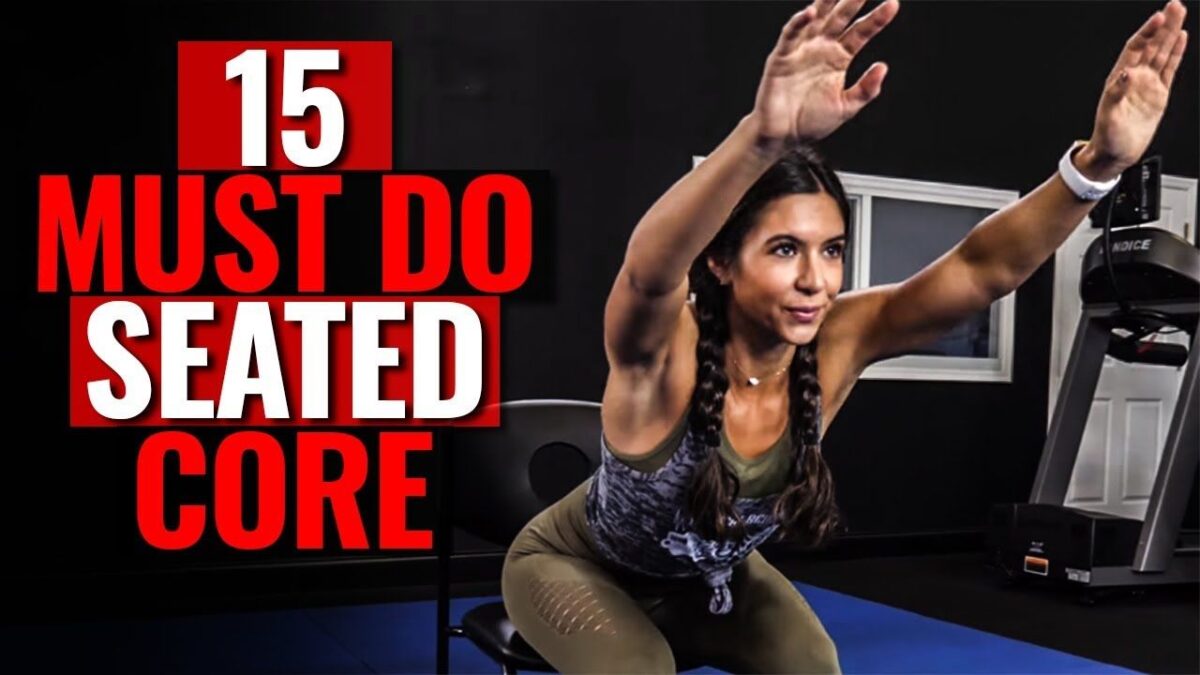
Unlocking Your Core: Big Secret Tips And Tricks For Unparalleled Stability
Unlocking Your Core: Big Secret Tips and Tricks for Unparalleled Stability
Related Articles
- Unlocking Your Fitness Journey: A Comprehensive Guide To Starting Your Gym Experience
- Unlocking Your Fitness Potential: Mastering Proper Form For Effective Workouts
- How To Plan A Recovery Day: Mastering The Art Of Rest And Regeneration
- 10-Minute Workouts For Busy Days: Unlock Your Inner Fitness Guru
- The Ultimate Guide To Creating Effective Fitness Challenges: A Deep Dive Into Motivation, Engagement, And Results
Introduction
Welcome to our comprehensive guide on Unlocking Your Core: Big Secret Tips and Tricks for Unparalleled Stability
Unlocking Your Core: Big Secret Tips and Tricks for Unparalleled Stability

Your core isn’t just a six-pack; it’s the powerhouse of your body, the foundation for every movement, and the guardian of your spine. A strong core doesn’t just look good, it feels good, and it helps you perform better in every aspect of life.
But the secret to unlocking true core stability lies beyond the typical crunches and planks. It’s about understanding the intricate interplay of muscles, movement patterns, and breath, and building a foundation that supports your body from the inside out.
This article delves into the big secret tips and tricks for achieving unparalleled core stability, offering a comprehensive guide to transform your understanding and approach to this vital aspect of fitness.
Understanding Core Stability: More Than Just Abs
The traditional view of core strength focuses on the "six-pack" muscles (rectus abdominis) and the obliques. However, true core stability involves a complex network of muscles, including:
- Diaphragm: The primary breathing muscle, also plays a crucial role in stabilizing the core.
- Pelvic Floor: A group of muscles at the base of the pelvis, essential for supporting organs and maintaining core stability.
- Transverse Abdominis (TVA): Deepest abdominal muscle, acting like a corset to provide internal support.
- Multifidus: Small, deep muscles running along the spine, providing stability and control.
- Erector Spinae: Muscles along the back, responsible for posture and spine extension.

Review
These muscles work in synergy to provide a stable base for movement, protect the spine, and enhance overall performance.
The Big Secret: It’s Not Just About Strength
While building strength in your core muscles is important, it’s not the sole key to unlocking true stability. The real secret lies in understanding and mastering the following:
1. Breathing: The Foundation of Core Stability
- Diaphragmatic Breathing: The cornerstone of core stability. This technique involves using the diaphragm for deep, controlled breathing, engaging the core muscles and enhancing pressure within the abdominal cavity.
- Proper Breathing Mechanics: Learn to breathe in a way that activates the diaphragm and engages the TVA, creating a natural "bracing" effect.
- Breath-Hold Techniques: Incorporating breath-holds during exercises helps to further engage the core and enhance stability.
Step-by-Step Guide
2. Activation: Waking Up Your Core Muscles
- Targeting the TVA: Focus on exercises and techniques that specifically activate the TVA, like diaphragmatic breathing and drawing-in maneuvers.
- Proprioception: Developing a sense of body awareness and control through exercises that challenge your balance and coordination.
- Core Engagement in Daily Activities: Consciously engage your core during everyday tasks, like walking, standing, and lifting objects.
Tips to Maximize Your Fitness Journey
3. Movement: Building Dynamic Stability
- Functional Movement Patterns: Focus on exercises that mimic real-life activities, engaging multiple muscle groups and challenging your core in a dynamic way.
- Anti-Rotation Exercises: These exercises challenge your core’s ability to resist twisting forces, enhancing stability and control.
- Anti-Extension Exercises: Exercises that resist forces that try to extend the spine, strengthening the back muscles and improving overall posture.
4. Mind-Body Connection: The Key to Conscious Control
- Mindfulness and Awareness: Practice focusing on your core during exercise, paying attention to muscle engagement and movement patterns.
- Visualization: Visualize your core muscles working together to provide stability and support.
- Body Feedback: Listen to your body, paying attention to subtle cues that indicate muscle activation and stability.
Progression: Building a Strong Foundation Step-by-Step
Building a strong core is a journey, not a sprint. Start with the basics and gradually progress towards more challenging exercises and techniques.
Level 1: Foundation Building
- Diaphragmatic Breathing: Master this technique to establish a solid foundation for core activation.
- Plank Variations: Start with a basic plank, gradually progressing to variations like the side plank and forearm plank.
- Bird Dog: This exercise targets the TVA and improves coordination and balance.
- Dead Bug: Focuses on isolating the core and strengthening the abdominal muscles.
Level 2: Dynamic Stability
- Anti-Rotation Exercises: Introduce exercises like the Pallof Press and anti-rotation press to challenge your core’s ability to resist twisting forces.
- Anti-Extension Exercises: Incorporate exercises like the reverse plank and good mornings to strengthen the back muscles and improve posture.
- Functional Movement Patterns: Include exercises like squats, lunges, and deadlifts to build dynamic stability and functional strength.
Level 3: Advanced Core Control
- Unilateral Exercises: Exercises performed on one leg or arm at a time, challenging balance and coordination.
- Dynamic Plank Variations: Progress to more challenging plank variations, such as the plank with arm reach or the plank with leg raise.
- Core-Focused Yoga Poses: Incorporate poses like boat pose, plank pose, and side plank to challenge your core in a controlled and mindful way.
Big Secret Tips and Tricks: Elevating Your Core Game
1. Embrace the Power of the "Draw-In"
The "draw-in" maneuver is a simple yet powerful technique for activating the TVA. Imagine you’re trying to zip up a tight pair of pants. Gently draw your belly button towards your spine, engaging the TVA without holding your breath.
2. Master the "Brace"
Bracing is a more advanced technique that involves engaging all the core muscles simultaneously. Imagine you’re about to be punched in the stomach. Tense your core, creating a rigid, protective shell around your midsection.
3. Unlock the Power of the "Hollow Body Hold"
This advanced exercise targets all the core muscles, promoting deep core engagement and stability. Lie on your back with your legs and arms extended. Engage your core, lift your arms and legs slightly off the ground, and hold.
4. Don’t Forget the Pelvic Floor
Engage your pelvic floor muscles by imagining you’re trying to stop yourself from peeing. This helps to create a stable base for your core and improve overall stability.
5. Listen to Your Body
Pay attention to your body’s feedback. If you feel any pain or discomfort, stop the exercise and consult with a healthcare professional.
6. Consistency is Key
Regular core training is essential for building and maintaining core strength and stability. Aim for 2-3 sessions per week, incorporating a variety of exercises to challenge your core in different ways.
7. Don’t Neglect Your Other Muscles
A strong core is only as effective as the muscles that surround it. Ensure a balanced training program that includes exercises for your legs, back, and shoulders.
8. Focus on Quality Over Quantity
It’s not about how many reps you can do, but how well you can control your core during each repetition. Focus on proper form and muscle engagement over speed and volume.
9. Incorporate Core Work into Your Daily Routine
Engage your core throughout the day, even during simple tasks. This can help to improve your posture, reduce back pain, and enhance overall performance.
10. Seek Professional Guidance
If you’re unsure how to properly engage your core or you have any injuries or concerns, consult with a qualified personal trainer or physical therapist.
Conclusion: Unlocking Your Potential, One Core Exercise at a Time
Mastering core stability is a journey of self-discovery, a process of understanding your body and its intricate mechanisms. It’s about building a foundation that supports your every movement, protects your spine, and empowers you to live life to the fullest.
By incorporating the tips and tricks outlined in this article, you can unlock the power of your core, transforming your body and your life.
Frequently Asked Questions
Q: What are the benefits of a strong core?
A: A strong core provides numerous benefits, including:
- Improved Posture: A strong core helps to maintain a neutral spine and improve posture.
- Reduced Back Pain: A strong core helps to stabilize the spine, reducing the risk of back pain.
- Enhanced Athletic Performance: A strong core improves power, balance, and coordination, leading to better athletic performance.
- Improved Digestion: Core engagement can help to improve digestion and reduce bloating.
- Increased Stability and Balance: A strong core helps to maintain balance and prevent falls.
Q: How often should I train my core?
A: Aim for 2-3 core training sessions per week, incorporating a variety of exercises to challenge your core in different ways.
Q: What are some common mistakes people make when training their core?
A: Common mistakes include:
- Focusing solely on abdominal exercises: Ignoring other core muscles like the diaphragm and pelvic floor.
- Overtraining: Doing too many core exercises, leading to muscle fatigue and injury.
- Neglecting proper form: Not engaging the core muscles properly, leading to ineffective training.
- Holding your breath: This can lead to increased pressure on the core and potentially cause injury.
Q: How can I tell if I’m engaging my core properly?
A: You should feel a tightening sensation in your abdomen, particularly in the TVA area. You should also feel a slight inward pull of your belly button towards your spine.
Q: Can I train my core at home?
A: Yes, you can train your core effectively at home with bodyweight exercises and simple equipment like resistance bands and stability balls.
Q: How long does it take to see results?
A: You may notice improvements in core strength and stability within a few weeks of consistent training. However, significant results may take several months of dedicated training.
Q: Can a strong core help me lose weight?
A: A strong core can help to boost your metabolism and burn more calories, but it’s not a magic bullet for weight loss. A healthy diet and regular exercise are essential for achieving sustainable weight loss.
Q: I have back pain. Can core training help?
A: A strong core can help to reduce back pain by stabilizing the spine and improving posture. However, if you have chronic back pain, consult with a healthcare professional before starting any new exercise program.
Q: What are some resources for learning more about core stability?
A: There are many resources available online and in print. You can also consult with a qualified personal trainer or physical therapist for personalized guidance.
Remember, building a strong core is a journey, not a destination. With dedication and consistent effort, you can unlock your potential and experience the transformative power of a strong and stable core.
Source URL: https://www.healthline.com/health/core-strength-exercises
Closure
We hope this article has provided valuable insights into Unlocking Your Core: Big Secret Tips and Tricks for Unparalleled Stability. Stay with us for more tips on fitness and wellness!
Stay tuned for more expert tips to elevate your fitness journey!
Don’t miss out on future content to help you reach your fitness goals—follow us for the latest updates.



